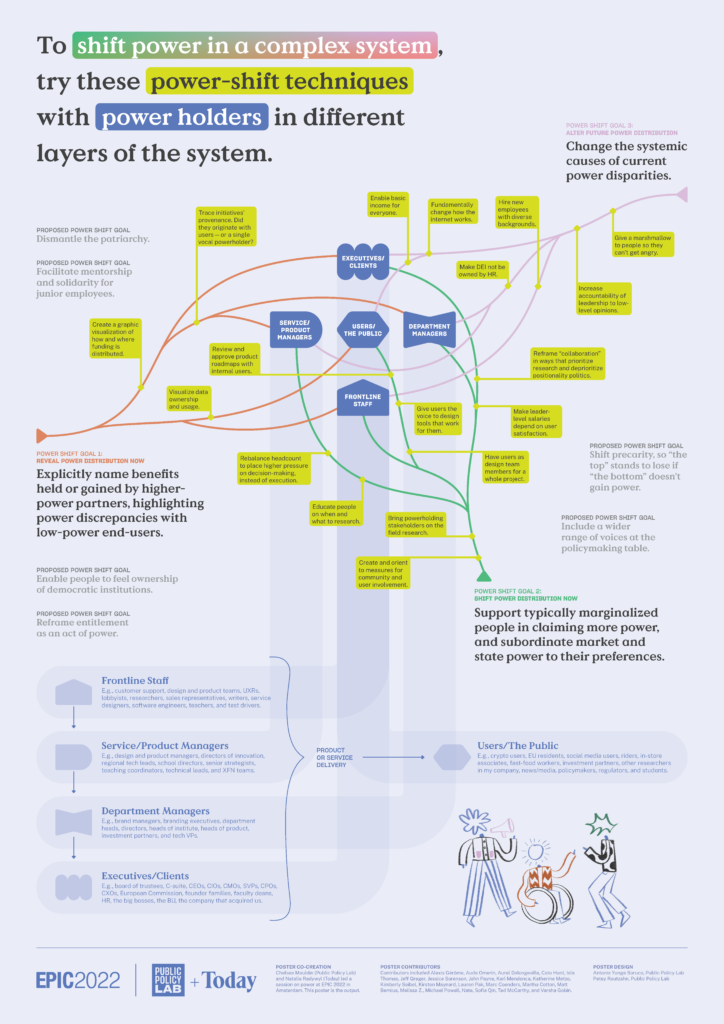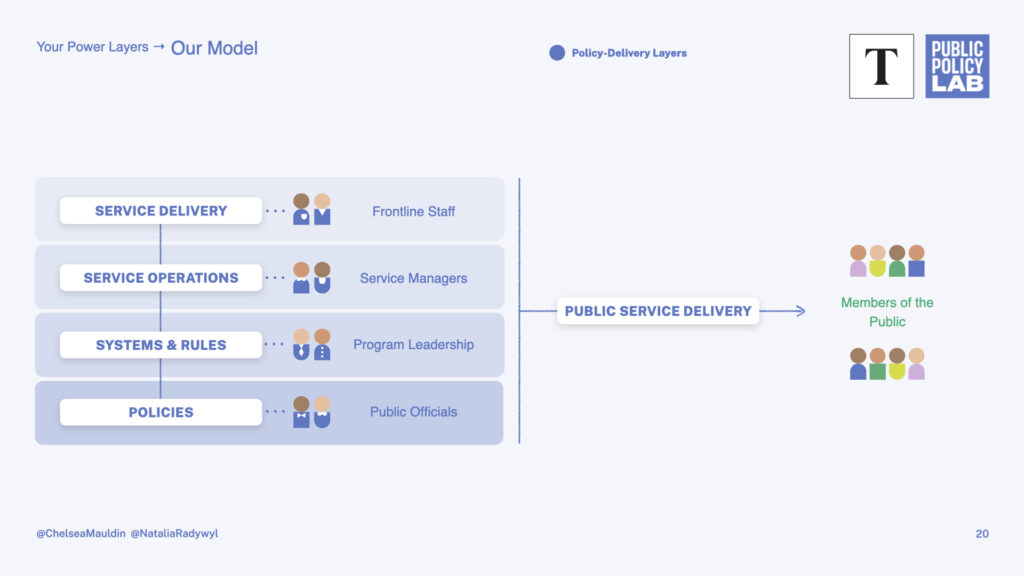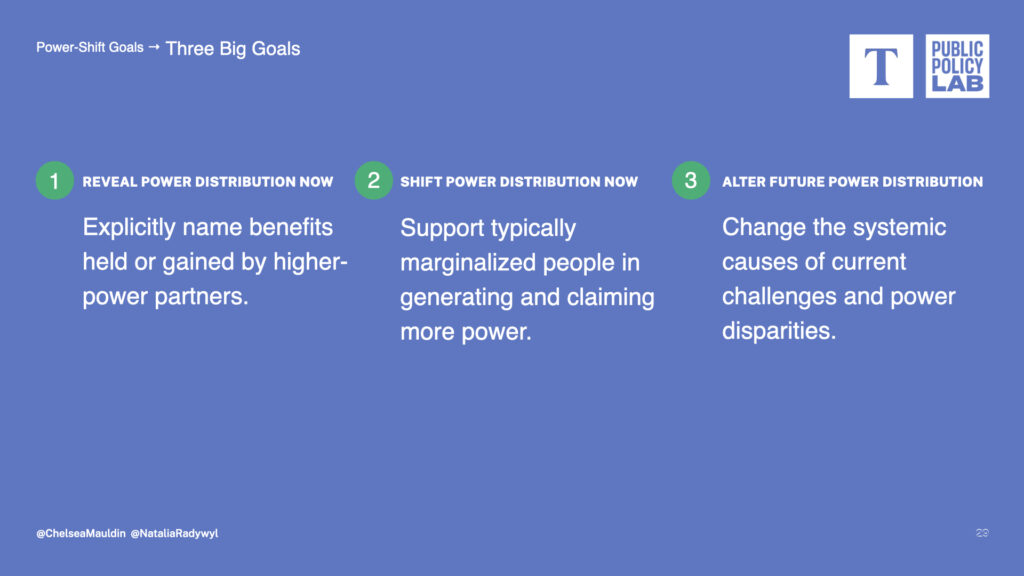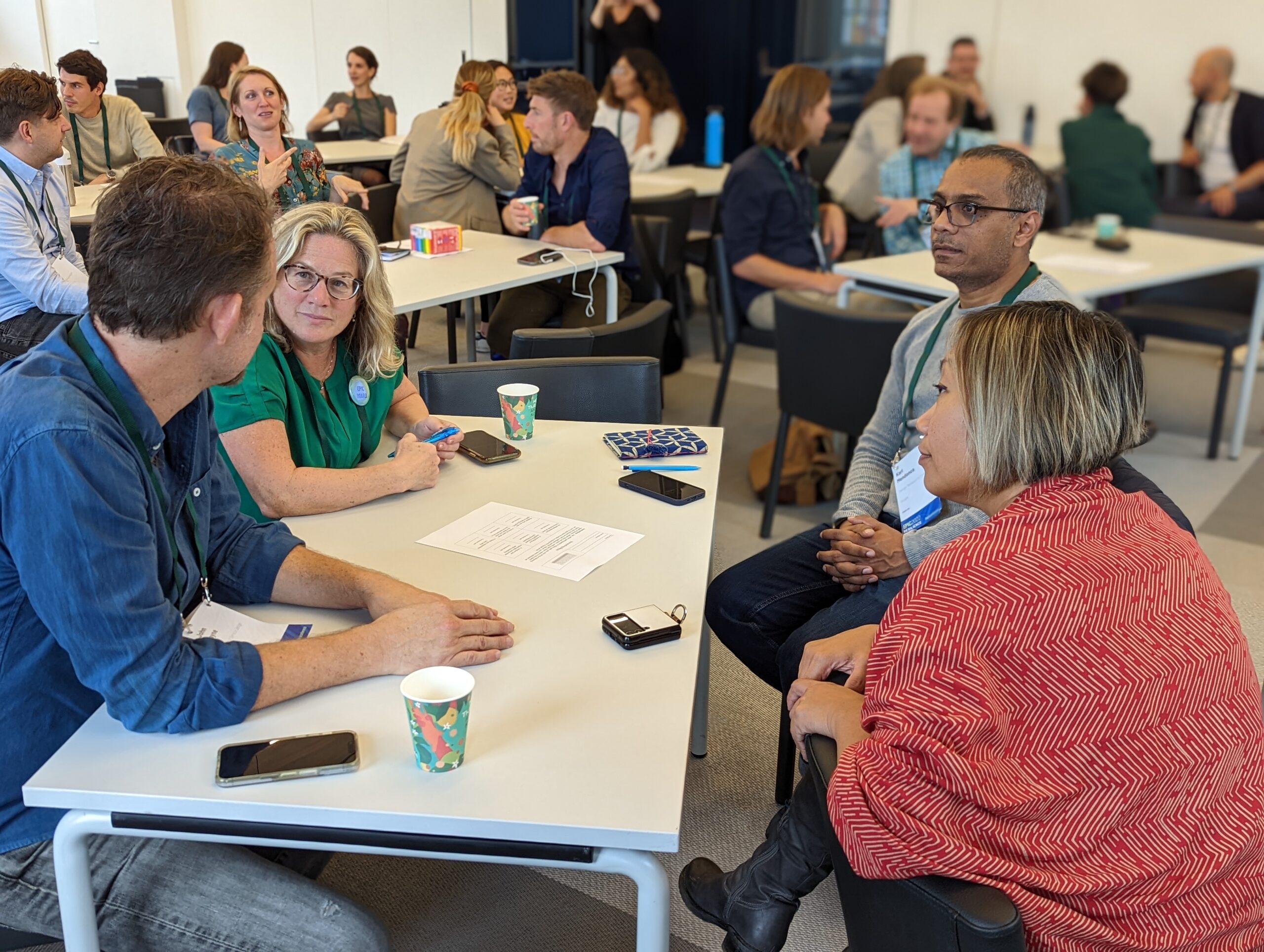This wildcard session was a conference-wide co-creation activity. Together, EPIC attendees reflected on the dynamic relationship between resilience and power. Then, through a facilitated, real-time activity, we collectively generated an actionable power-redistribution framework—a set of strategies for EPIC members to embed social resilience in their work, whether at a major tech or consumer firm, a government agency, or a consultancy. A designed artifact that captures this framework was produced and distributed to the community.
I (and a translator) were interviewing a woman in her home when her husband came home and was angry to find us, and demanded we stop and leave.
I was asked to name-drop in an academic paper to get it accepted by the organizers/editors.
When I do research in our stores and associates refer to me as being “from corporate,” I try to reframe as “I’m from tech” so that corporate “bad behavior ” doesn’t transfer to me.
 These quotes, from participants in a ‘wildcard’ session we led at EPIC2022, illustrate moments when session participants felt that their work led to uncomfortable intersections with systems of power. It was moments like these that prompted us, as then-colleagues at the Public Policy Lab (https://www.publicpolicylab.org/), a New York City-based nonprofit that collaborates with government agencies, to develop a framework for assessing how our research and design projects could more deliberately name and shift power imbalances.
These quotes, from participants in a ‘wildcard’ session we led at EPIC2022, illustrate moments when session participants felt that their work led to uncomfortable intersections with systems of power. It was moments like these that prompted us, as then-colleagues at the Public Policy Lab (https://www.publicpolicylab.org/), a New York City-based nonprofit that collaborates with government agencies, to develop a framework for assessing how our research and design projects could more deliberately name and shift power imbalances.
Now, Chelsea still works at Public Policy Lab and Talia has moved on to Today (https://today.design/), an Australian-based B-Corp that designs strategic solutions for the purpose sector, but we remain fascinated by how power—who has it, who doesn’t—informs our projects and affects the resiliency of our work. At EPIC, we invited our conference-mates to join us in a co-creation activity, based on our power-shift framework, and explore how we might more consciously engage with power in our professional lives as researchers and designers. Download a PDF version of the poster of power-shift goals and related tactics that participants defined.
In this article we’ll share some of the theoretical grounding that underlies the frameworks we developed, describe the frameworks themselves, and finish by detailing how EPIC’s wildcard participants co-created a broad range of tactics that we might all use in our work to shift power.
Resilience and Power Distribution
A key dynamic in resilient systems is interdependency. However, resilience is not an inherently emergent characteristic of a system. Historically, our organizational structures have relied on interdependencies characterized by uneven distributions of power. These high concentrations of power have only been sustained by limiting the amount of power that others in the system have access to. For example, corporate executives making decisions that affect service workers and users that result in enormous pay disparities and unaffordable pricing while remaining impermeable to dissent or change.
Yet, since the 1990s, we have been stumbling through an era of ‘reflexive modernization’ (Beck, Giddens, Lash: 1994) in which the conventional hierarchies of modern institutions and systems are dissolving. We’re bearing witness to this dissolution through crises such as the erosion of the liberal democratic nation-state and fake news undermining the credibility of the fourth estate.
Fortunately, new opportunities emerge when complex systems undergo these large shifts. When thinking specifically about the issue of concentrated organizational power, these opportunities are surfacing around concerns with equity and shifting towards flatter, more inclusive and reflexive interdependent systems. We’ve seen this emerge through instances such as service industry employees self-organizing to unionize within large corporations.
For those involved in professional production of research and design, this shift has been manifesting in a rising trend towards distributed and participatory project practices. For example, data collection is increasingly recognized as an extractive practice when solely conducted by a team’s researchers. As a consequence, we’re seeing a drive towards participatory methods as a new standard for conducting ethical fieldwork, such as through peer-led methodologies. Similarly, project teams are attempting to distribute the power they typically harbor through ‘co-production’ project models, by which members of the public with lived experience of a relevant program or service area become a formal part of the project team or an advisory group, which may also include advocates, community leaders, and policy makers. Through the co-production, this blended team collectively shares experiences and builds capabilities by doing the entire project together, from planning through to research and co-design.
For projects to be successfully grounded within inclusive and equitable practices such as these, decision-making power and authority must be distributed. This involves high power stakeholders (such as clients and funders) recognizing the value of ceding their hegemonic power so that more diverse voices play a role in sharing perspectives and making decisions. The outcome is a more resilient organizational structure that develops interdependencies with a broader network of stakeholders who can provide input, socialize ideas, and guide implementation more successfully than the project team or project partner could have done alone.
While these shifts are important and early indications of promising systemic change in the organizations we work in and for, the practices are nascent. Practitioners seeking to transform their project and organization’s practices frequently lack the tools, the support, and even the vocabulary to shift to more resilient and equitable ways of working. How do researchers and designers with progressive intentions to shift power make actual change in the hierarchical organizations they work in and for?
Our Frameworks for Power Shifting
Over the past several years, the Public Policy Lab, a developed several internal tools for observing power distribution inside complex government systems and for proactively identifying opportunities to shift power from current power holders to stakeholders who currently hold limited power.
The first of these frameworks, PPL’s power layers, is a simplified model for representing common functions and roles inside of government systems. The complex hierarchies of policy creation and delivery are reduced to just four functions and roles:
Service delivery is led by frontline staff—the human face of the government service to the public, even though they might be employed by a contracted community-based organization. Out of all the humans involved in this process of delivery policy, they’re both closest to the public and usually the least empowered. Then there are service managers who are responsible for the service operations that keep a program or service running; they’ll often have authority over the frontline staff. Program leaders are responsible for establishing and overseeing the rules and systems that regulate programs and services—the actionable program mechanics that turn the policies that public officials create into something real that exists in the world. This framework for thinking about system operations, although minimalist, is useful for observing who has power in a given organization over what.
PPL’s second useful framework is a set of power-shift goals: aspirations or intentions for observing and attempting to alter how power is allocated in systems. These goals grew from the observation that well-intentioned human-centered research and design practices, even when well executed, frequently fail to meaningfully change how power is exercised. Rather, the newly designed outputs of HCD processes often improve aspects of service implementation without fundamentally altering why the less-optimal prior solutions came to be—allowing for reversion to forms and behaviors that perpetuate power imbalances. To more significantly change how a system functions, we believe researchers and designers must move past ‘good’ HCD goals to more systemic change by embracing three power-shift goals:
Rather than only naming benefits to be gained by low-power end-users, we must explicitly name benefits held or gained by higher-power partners, highlighting power discrepancies with low-power end-users. Rather than consult with typically marginalized people when deciding how to exercise state power, we must support typically marginalized people in claiming more power and subordinate state power to their preferences. Finally, rather than building capacity of low-power service users to handle current challenges, we must change the systemic causes of current challenges and power disparities.
EPIC Wildcard Session
These two frameworks formed the basis for our co-creation activity at EPIC2022, intended to explore how EPIC’s community of applied researchers could cultivate deliberate shifts in power distribution. In a 90-minute ‘wildcard’ session, participants collectively iterated on the Public Policy Lab’s power-redistribution frameworks to develop an EPIC-specific set of strategies for embedding equitable systemic resilience in their work, whether at a major tech or consumer firm, a government agency, or a consultancy.
To kick off the wildcard session, participants were invited to share their ‘power moments’: times in which their work intersected with power in uncomfortable or surprising ways (such as those outlined in the introduction to this article). This experiential reflective exercise intended to remind participants of their own positionality within systemic power at work. The pace then picked up as we shifted into co-creation, which comprised rapid participatory activities involving mobile phones, real-time polling and content-sharing using Mentimeter, and collectively taking stock of each others’ responses.
After learning about the power layers, participants responded to Mentimeter prompts to share the layers appearing in the power hierarchies they work within. We then walked through power-shift goals as a primer for participants contributing their own power-shift tactics for disrupting power. By making together in this way, it was the authors’ intention that the EPIC community would participate in a micro-enactment of the collective action that resilient systems and societies require. Immediately after the wildcard session, we synthesized the content created by the participants and laid it into a poster format, which we sent out for rapid printing. The following day, we made the power-shift posters (see above) available to all conference attendees as both a thought piece and tool for driving daily action toward social resilience. (It should be noted that this ‘rapid’ turn-around was only possible because the output leveraged multiple years of iterative use of these frameworks.)
A small sample of the tactics contributed by the EPIC community included:
- To reveal power distribution now, create a graphic visualization of how and where funding is distributed, with executives/clients, department managers and service/product managers
- To shift power distribution now, have users as design team members for a whole project
- To alter future power distribution, increase accountability of leadership to the opinions of those with less power
While this session represented only a 90-minute commitment and was intended as a high-energy exercise, this type of work represents a direction the authors believe is critical for real and resilient change. If we don’t identify and visualize power, we cannot begin shifting it. If we don’t think in systems and what it takes to cultivate equitable new social contracts, well-intentioned interventions (around climate, justice, or freedom) may fail to have impact—or worse, have unintended negative consequences. We cannot build the systems of the future using the power dynamics of the past.
Wildcards are a program category at EPIC2022 designed to inspire out-of-the-box ideas from our community. The committee invited creative proposals, of any kind, that engage with the theme of resilience—and the result is a mix of visual, interactive, contemplative, and other unique engagements.



